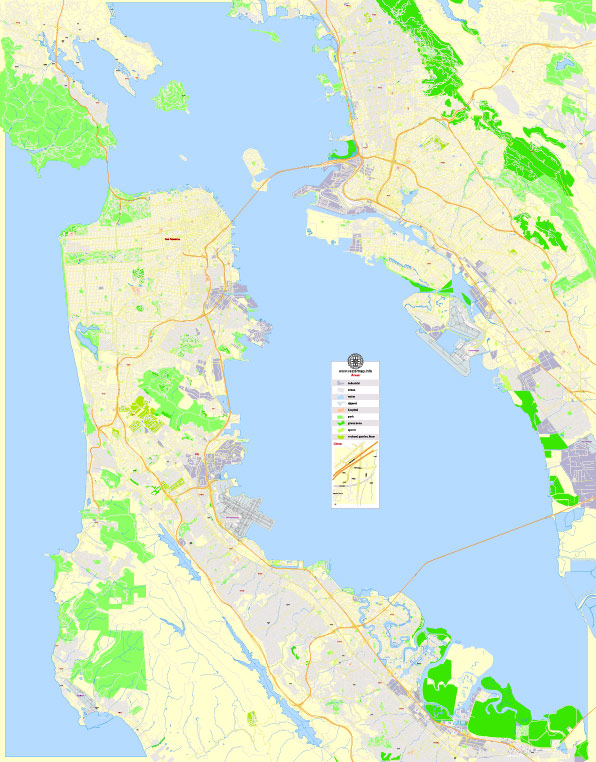San Francisco and Oakland, both located in California, have unique and intertwined histories that are shaped by the broader historical context of the United States. Here is a brief overview of the history of these two cities:
San Francisco:
- Early Indigenous Inhabitants: Before European settlement, the San Francisco Bay Area was home to various indigenous groups, including the Ohlone people. They had a rich cultural heritage and lived in the region for thousands of years.
- Spanish Colonial Period: In 1776, the Spanish established a military presidio and the Mission San Francisco de Asís (commonly known as Mission Dolores) in the area that is now San Francisco. This marked the beginning of European colonization.
- Mexican Rule: In 1821, Mexico gained independence from Spain, and California became part of Mexico. San Francisco remained a relatively small settlement during this time.
- Gold Rush and Rapid Growth: The discovery of gold in the Sierra Nevada foothills in 1848 led to the California Gold Rush. San Francisco quickly transformed into a booming port city as thousands of fortune-seekers arrived by sea, earning it the nickname “The Golden Gate.”
- Statehood and Growth: California was admitted as the 31st state of the United States in 1850, and San Francisco continued to grow, becoming a major commercial and cultural center on the West Coast.
- Earthquakes and Rebuilding: San Francisco faced significant challenges, including the devastating 1906 earthquake and subsequent fires. The city was rebuilt and continued to thrive in the early 20th century.
- World War II and Post-War Era: San Francisco played a vital role in World War II as a major military and transportation hub. After the war, it became a center for counterculture and social movements in the 1960s and 1970s.
- Contemporary San Francisco: Today, San Francisco is known for its diverse population, iconic landmarks (such as the Golden Gate Bridge and Alcatraz Island), technology industry (Silicon Valley), and cultural contributions.
Oakland:
- Early History: Oakland was originally inhabited by the Ohlone people and later saw Spanish colonization.
- Mexican Rule and Land Grants: Like San Francisco, Oakland was part of Mexican California. It saw several land grants to early settlers.
- Statehood and Development: With the American conquest of California in 1846 and statehood in 1850, Oakland began to grow as a transportation and industrial center.
- Railroads and Growth: The arrival of railroads in the 1860s and the completion of the First Transcontinental Railroad in 1869 connected Oakland to the rest of the country, spurring further growth.
- 1906 Earthquake: Oakland, like San Francisco, was affected by the 1906 earthquake and also experienced damage and fires.
- Mid-20th Century: Oakland continued to develop as an industrial and transportation hub, and it played a significant role during World War II.
- Civil Rights and Social Movements: Oakland was a center for civil rights activism and counterculture movements, particularly in the 1960s and 1970s.
- Contemporary Oakland: Today, Oakland is known for its cultural diversity, arts scene, and proximity to San Francisco. It has faced challenges related to gentrification, but it remains a vibrant and dynamic city.
Both San Francisco and Oakland have rich and complex histories that reflect the broader historical trends of the United States, from colonization and westward expansion to the challenges and opportunities of the 20th and 21st centuries.





 Author: Kirill Shrayber, Ph.D.
Author: Kirill Shrayber, Ph.D.